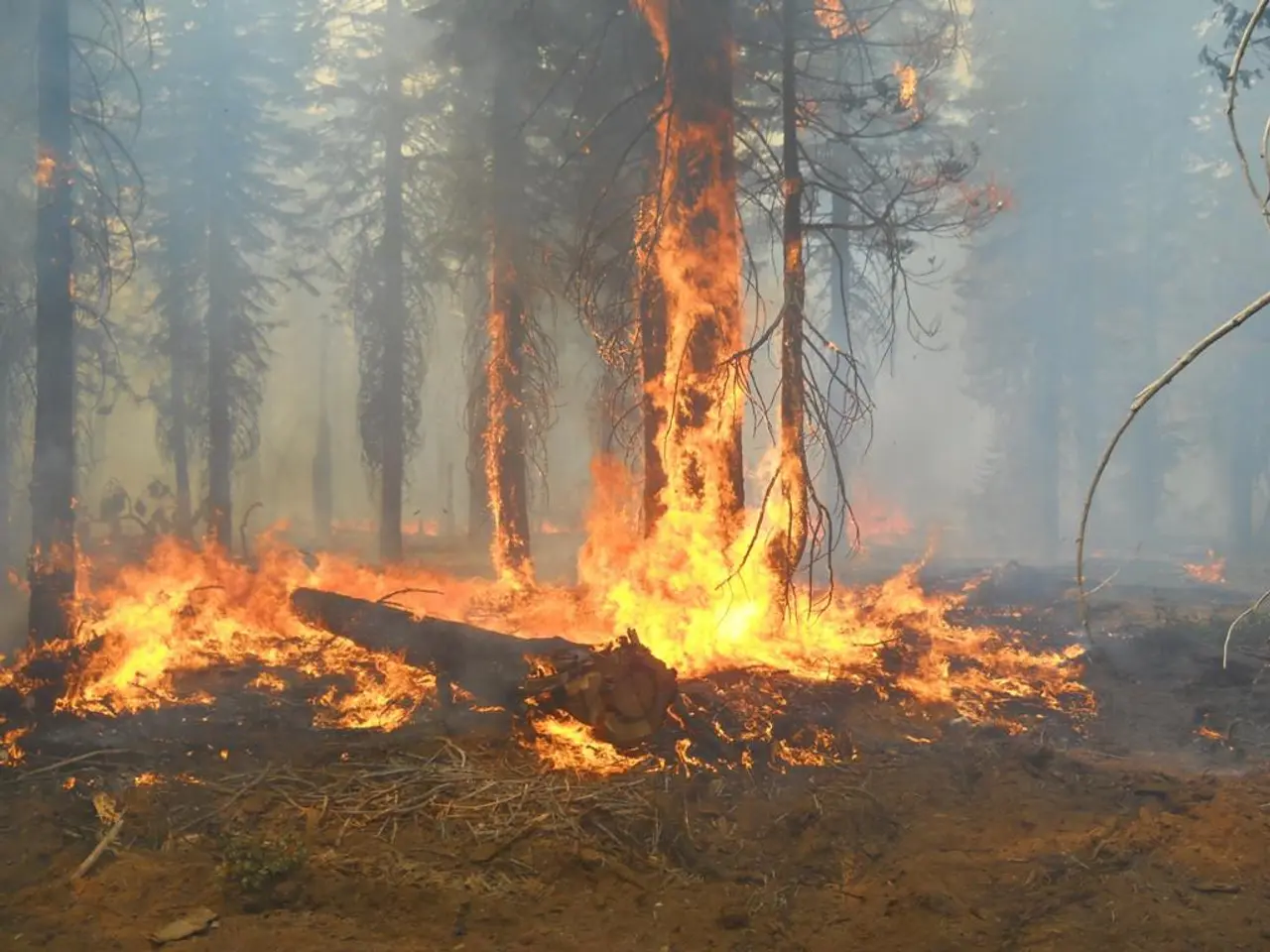Forest Fire Alert Issued for Thuringia: Be Prepared for Potential Wildfire Danger
In the heart of eastern Germany, wildfires continue to rage, with two significant blazes in the Gohrischheide area near the Saxony-Brandenburg border and the Thuringian town of Gösselsdorf causing concern for local authorities and emergency services.
The fire in Gohrischheide, which broke out on July 1, has been burning for several days, affecting hundreds of hectares of forest and natural reserve land. The fires have resulted in severe injuries to two firefighters and the evacuation of over 100 residents from nearby villages such as Heidehäuser, Neudorf, and parts of Lichtensee. Authorities have issued mobile phone alerts instructing residents to take only essentials and use improvised respiratory protection due to smoke.
Over 600 helpers from various organizations were deployed in the fire area on Sunday, with hundreds of forces battling the flames. The challenging conditions include parts of the fire area being on a former military training ground, posing risks of ammunition detonations. Despite the difficulties, officials from Saxony have described the situation as largely stable, albeit with Brandenburg authorities remaining cautious due to the ongoing extreme heatwave conditions across Germany and Europe.
Meanwhile, in Thuringia, the forest fire in Gösselsdorf has been burning since Wednesday, marking the largest forest fire in the state for at least 33 years. Minister President Mario Voigt described the event as an "exceptional event," and a disaster alert has been declared. However, the weather forecast in Thuringia is predicted to have high humidity and lower temperatures, which benefits the situation. If something new flares up in Thuringia, it won't be immediately fanned due to the forecasted weather conditions.
Firefighting efforts in both regions have been hampered by wind, heat, and water supply issues. To combat these challenges, a fire-fighting unit specializing in vegetation fire-fighting arrived from Saxony-Anhalt, while unmanned fire-fighting robots from Brandenburg were used. Residents and travelers are advised to avoid the affected regions due to ongoing fire operations and risks.
Despite the ongoing battles, there are signs of stabilization and easing in some areas of eastern Germany. The forest fires have eased, with only individual spot fires remaining, which can be relatively quickly extinguished. Farmers are assisting with tractors and water trailers to fill fire ponds.
In the Gohrischheide area, the situation remains serious, with the fires posing a threat to both human life and the environment. However, with the combined efforts of emergency services, residents, and farmers, the situation is being managed as best as possible under the challenging conditions.
The satellite images from Copernicus have provided new insights into the extent of the fires, offering valuable data to aid in the firefighting efforts. As the battles continue, the hope is that the stabilization trend continues, and the fires can be brought under control as soon as possible.
- More environmental science research is needed to address the increasing frequency of wildfires due to climate change, such as the ones in Gohrischheide and Goesselsdorf.
- The weather forecasting in Thuringia predicts high humidity and lower temperatures, which should help in containing the ongoing forest fire in Goesselsdorf and prevent new ones from sparking.
- Alongside conventional firefighting methods, we could explore the use of weather-forecasting data and technology in climate-change science for a more proactive approach to wildfire prevention and management.








